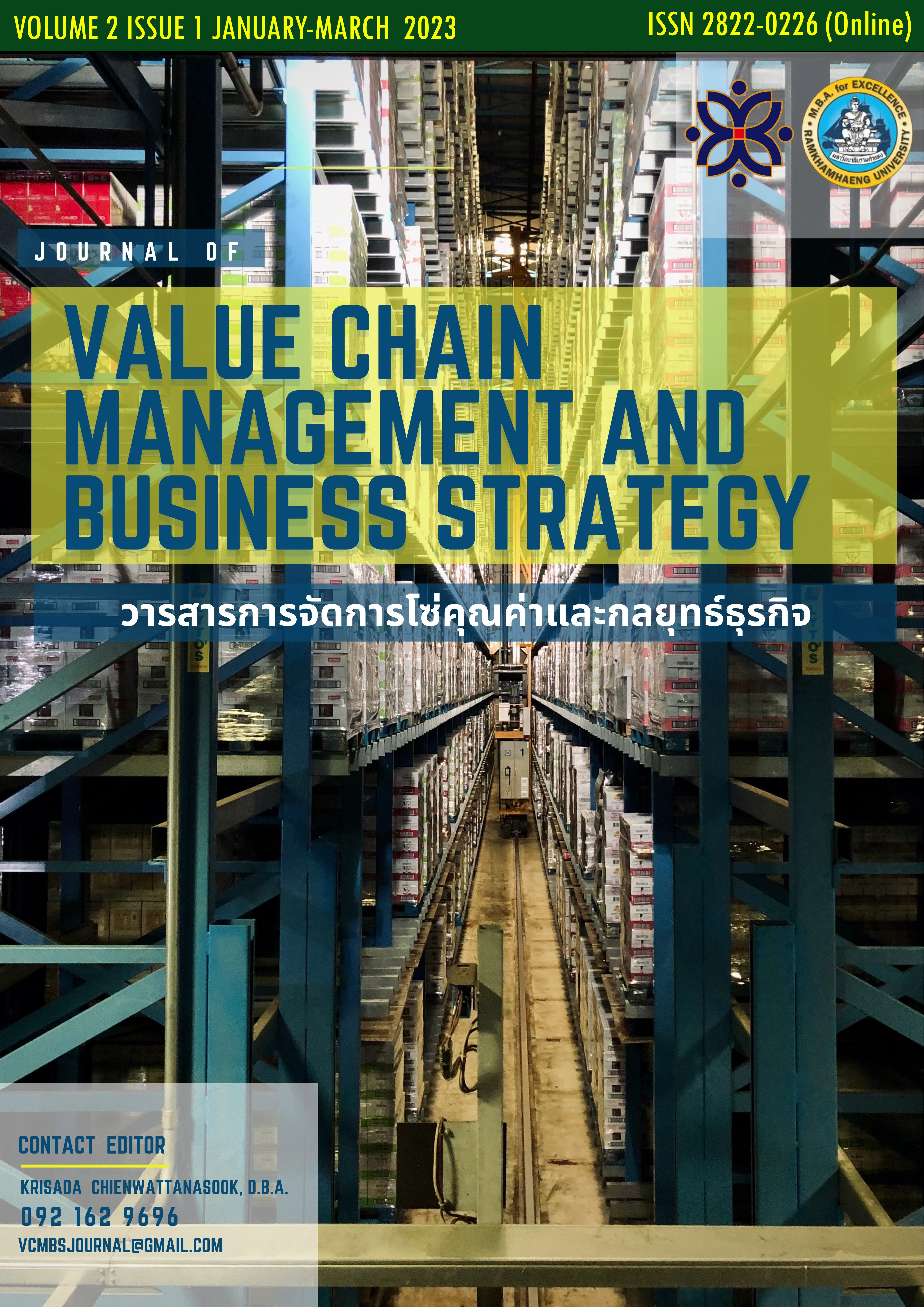A COMPARATIVE STUDY OF DEMOGRAPHIC GROUPING ON THE FUTURE DEMAND FOR EMPLOYEE SKILLS
คำสำคัญ:
Demographic Factors, Human Resource Development, The Future Demand for Employee Skillบทคัดย่อ
In today's fast-changing labour market, globalization, technology, and demographic changes are changing the job market and requiring new skills. So, to maintain their position in the market, individuals as well as enterprises need to adapt. Understanding the skills that will be in demand in the future can help employers make informed hiring, training, and development decisions. The purpose of this study was twofold: 1) to examine the degree of future demand for employee skills at a firm in Beijing, China, and 2) to examine disparities in demographic characteristics determining future demand for employee skills in a firm in Beijing, China. The study population comprised 125 employees from the Beijing-based organization, and data was collected via a survey questionnaire. The statistical tools employed in the data analysis included frequency, percentage, mean, standard deviation, t-test, one-way ANOVA, and post hoc test with the Least Significant Difference method. The findings revealed that a majority of respondents perceived the need for skill development to be of high importance. Specifically, the top five skills deemed most essential were analytical thinking and innovation, leadership and social influence, emotional intelligence, strong communication and interpersonal skills, and active learning and learning strategies. The results of the hypothesis testing revealed that demographic factors such as gender, age, education level, income, and work experience significantly affected the future demand for employee skills in the Beijing-based organization, with varying degrees of statistical significance at the 0.05 level.
เอกสารอ้างอิง
Acemoglu, D. & Restrepo, P. (2018). The Race between Man and Machine: Implications of Technology for Growth, Factor Shares, and Employment. American Economic Review, 108(6), 1488-1542.
Ahmed, S. A., Cruz, M., Go, D. S., Maliszewska, M., & Osorio‐Rodarte, I. (2016). How Significant Is Sub‐Saharan Africa's Demographic Dividend for Its Future Growth and Poverty Reduction?. Review of Development Economics, 20(4), 762-793.
Akyazi, T., Goti, A., Oyarbide, A., Alberdi, E., & Bayon, F. (2020). A guide for the food industry to meet the future skills requirements emerging with industry 4.0. Foods, 9(4), 492.
Anwar, G., & Abdullah, N. N. (2021). The impact of Human resource management practice on Organizational performance. International journal of Engineering, Business and Management, 5, 35-47.
Bakhshi, H., Downing, J. M., Osborne, M. A., & Schneider, P. (2017). The future of skills: Employment in 2030. Pearson.
Došenović, D., & Zolak-Poljašević, K. (2021). Digital competence in the era of digital transformation: A systematic literature review. Sustainability, 13(1), 1-20.
George, D., & Mallery, P. (2016). SPSS for Windows Step by Step: A Simple Guide and Reference (13th ed.). Pearson.
Gilley, J., Eggland, S., Gilley, A. M., & Maycunich, A. (2002). Principles of human resource development. Basic Books.
Kareem, M. A., & Hussein, I. J. (2019). The impact of human resource development on employee performance and organizational effectiveness. Management Dynamics in the Knowledge Economy, 7(3), 307-322.
Krejcie, R. V., & Morgan, D. W. (1970). Determining sample size for research activities. Educational and psychological measurement, 30(3), 607-610.
McKinsey Global Institute. (2017). Jobs Lost, Jobs Gained: Workforce Transitions in a Time of Automation. https://mck.co/3KipeHb
Nemeth, C. P. (2016). The ability to adapt. Resilience Engineering Perspectives, 2, 23-34.
OECD. (2019). The Future of Work and Skills: OECD Education 2030 Position Paper. https://www.oecd.org/education/2030-project/position-papers/Future-of-Work-and-Skills.pdf
Patrick, P., & Mazhar, S. (2019). Core functions of human resource management and its effectiveness on organization: A study. International Journal of Social Economics, 9(5), 257-266.
Peplińska, A., Lipowski, M., & Nieckarz, Z. (2011). Career and professional development–challenges for employees and modern organizations. Polish Journal of Social Science, 6(1), 75-100.
Sakdiyakorn, M., & Voravivatana, S. (2015). New Public Management from a Human Resource Perspective: The Case of Thailand. Thai Journal of Public Administration, 13(1), 125-125.
Schallock, B., Rybski, C., Jochem, R., & Kohl, H. (2018). Learning Factory for Industry 4.0 to provide future skills beyond technical training. Procedia manufacturing, 23, 27-32.
Spetz, J., Trupin, L., Bates, T., & Coffman, J. M. (2015). Future demand for long-term care workers will be influenced by demographic and utilization changes. Health Affairs, 34(6), 936-945.
World Economic Forum. (2020). The future of jobs report 2020. https://www3.weforum.org/docs/WEF_Future_of_Jobs_2020.pdf
Zahidi, S. (2020). The jobs of tomorrow. Finance & Development, 57(004).
ดาวน์โหลด
เผยแพร่แล้ว
รูปแบบการอ้างอิง
ฉบับ
ประเภทบทความ
สัญญาอนุญาต
ลิขสิทธิ์ (c) 2023 วารสารการจัดการโซ่คุณค่าและกลยุทธ์ธุรกิจ

อนุญาตภายใต้เงื่อนไข Creative Commons Attribution-NonCommercial-NoDerivatives 4.0 International License.




